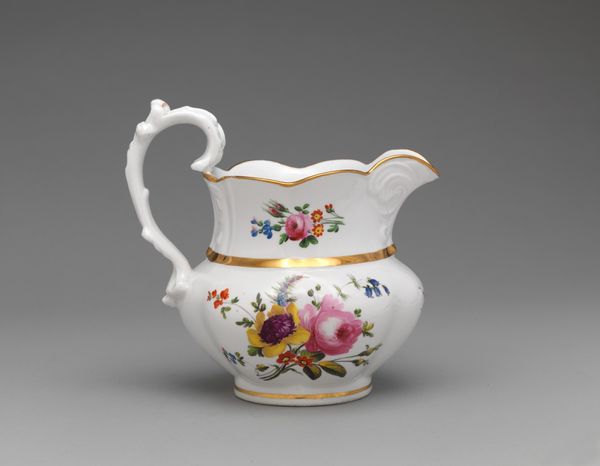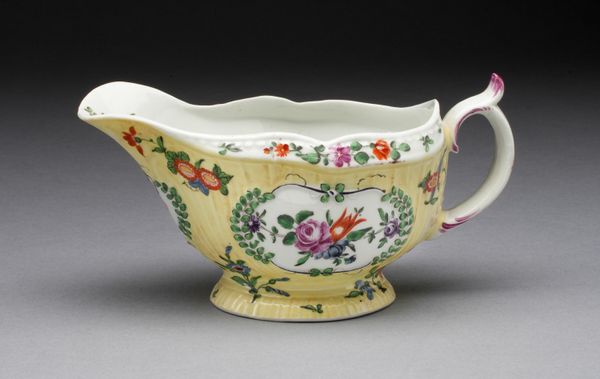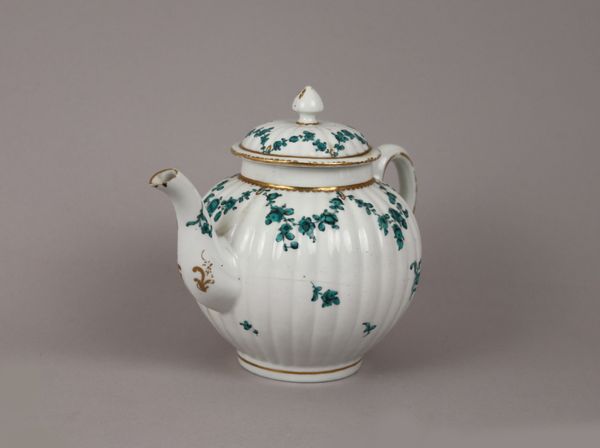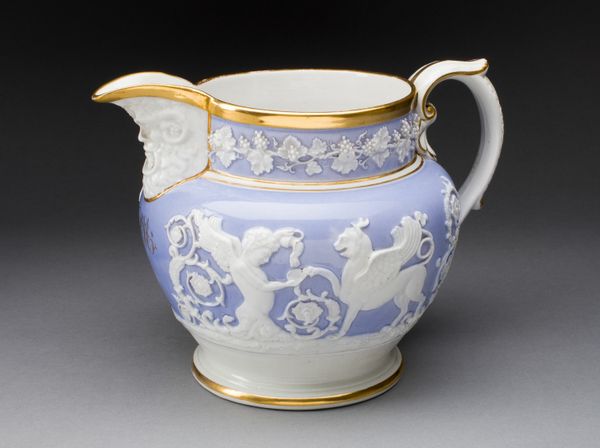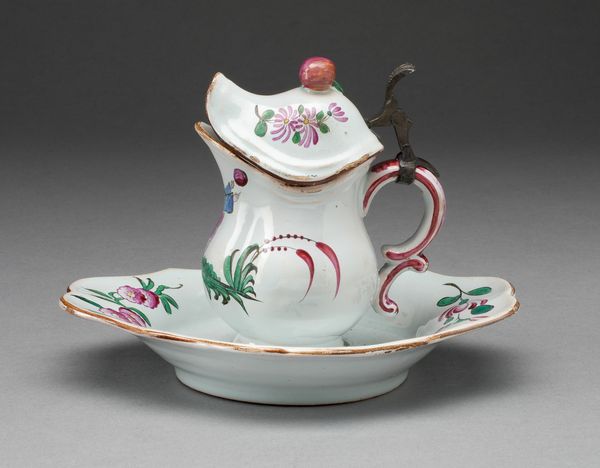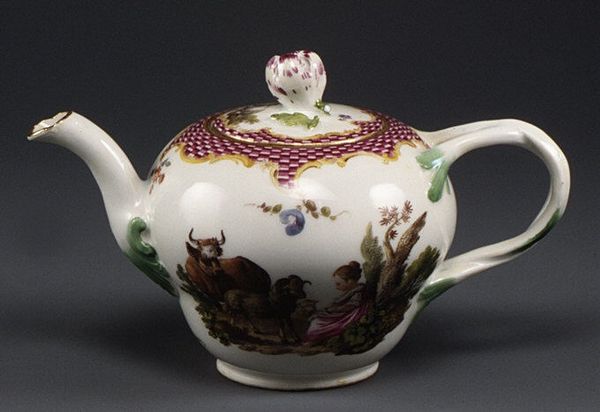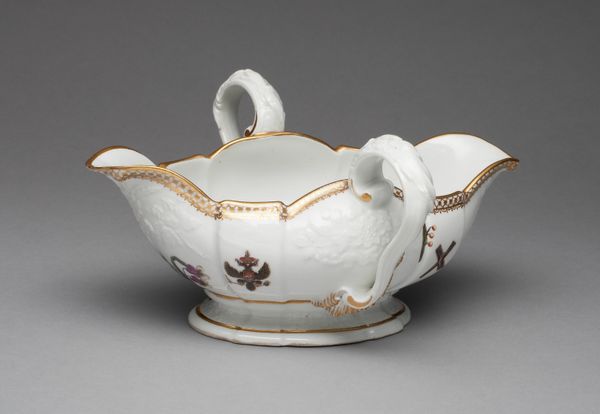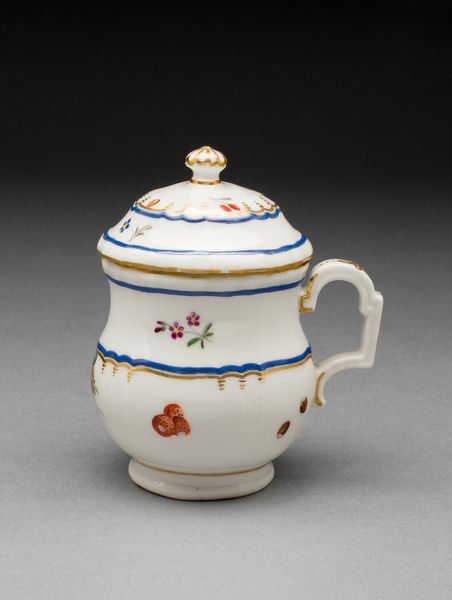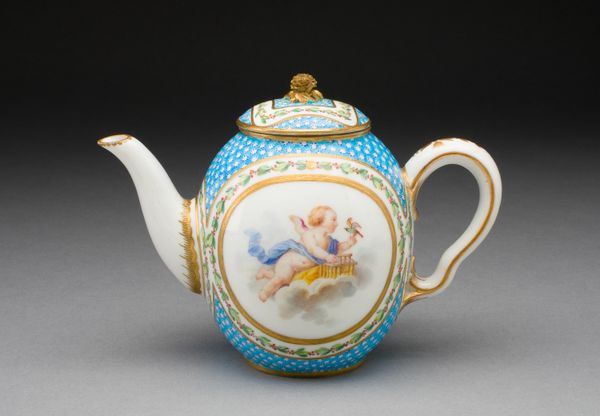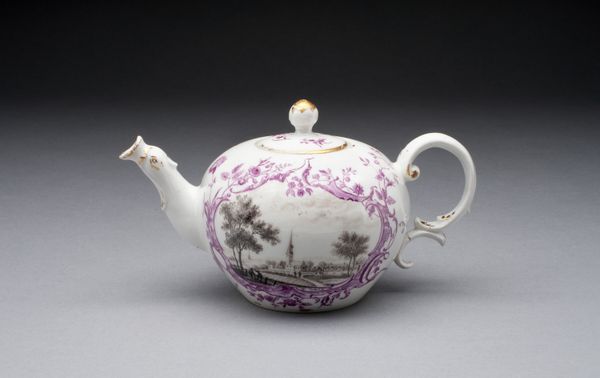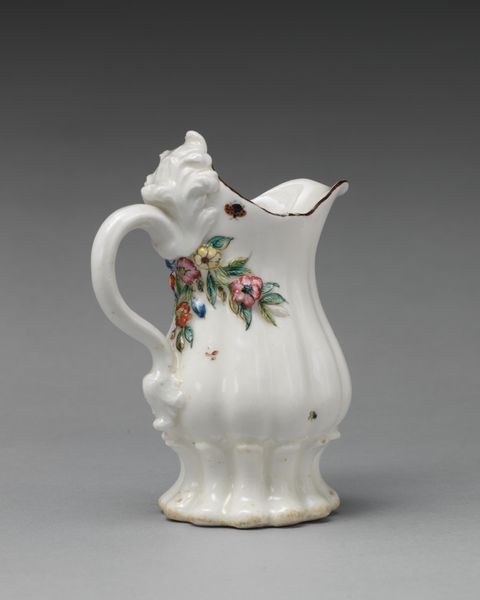
ceramic, porcelain
#
landscape
#
ceramic
#
porcelain
#
ceramic
#
decorative-art
#
rococo
Dimensions: 11 × 13.7 × 6.7 cm (4 5/16 × 5 3/8 × 2 5/8 in.)
Copyright: Public Domain
Editor: This delicate porcelain gravy boat gives me a very lighthearted feeling. It’s incredibly ornamental, almost frivolous, with its soft colours and lavish gold detailing. Curator: Indeed. What we see here is a sauceboat, created around 1770 by the Plymouth Porcelain Factory. The piece really epitomises Rococo decorative arts. Notice the carefully crafted handle, and those flowing lines… Every detail speaks to a culture obsessed with refinement and pleasure. Editor: Absolutely. But let’s consider who exactly enjoyed this refinement? This level of detail and this material – porcelain – immediately point to elite consumers. And Plymouth, as a porcelain center, tells us something about the industrial networks necessary to create this object and get it into wealthy households. It wasn’t simply about a patron commissioning a unique artwork; this speaks to factories and workers. Curator: You raise a crucial point. The availability of porcelain in England reflects broader shifts in manufacturing and trade networks. The rise of porcelain production also parallels the expansion of global trade and the availability of materials, pointing towards histories of extraction, colonial labor, and the increasing commodification of luxury goods that this piece facilitated for aristocratic customers. Editor: And the decorative landscapes featured in pink are a subtle reminder of the landed gentry who would use an object such as this – evoking ideas of country estates, idealized nature, and power concentrated in very few hands. The function of a seemingly innocuous item like this says so much about how status was consumed and reinforced! Curator: That tension between everyday functionality and the performance of status is compelling. Looking at the handle again, you can also appreciate that it was created separately using molds, a means of semi-mass production that still involved a significant amount of handiwork for shaping and application to the main body. We have to acknowledge the highly skilled labourers whose work gave objects like these such delicate beauty. Editor: So even in something as outwardly gentle as this "Sauceboat," we can begin to trace some pretty intricate lines of power and labor during that era. Curator: Precisely. A seemingly simple object reflecting a complex web of production and societal value systems.
Comments
No comments
Be the first to comment and join the conversation on the ultimate creative platform.
